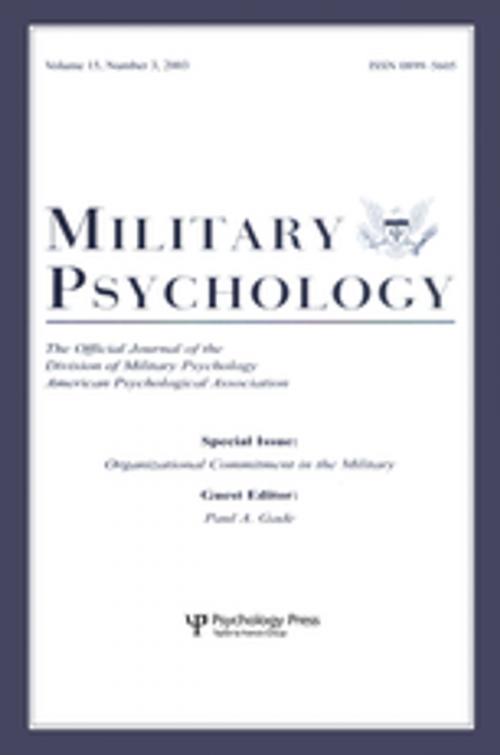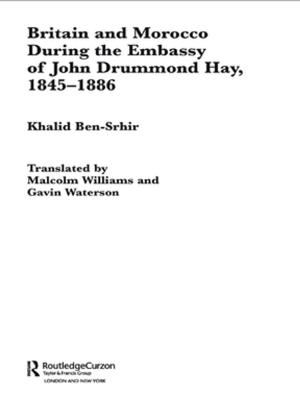Organizational Commitment in the Military
A Special Issue of military Psychology
Nonfiction, Health & Well Being, Psychology, Occupational & Industrial Psychology| Author: | ISBN: | 9781317708070 | |
| Publisher: | Taylor and Francis | Publication: | October 23, 2017 |
| Imprint: | Psychology Press | Language: | English |
| Author: | |
| ISBN: | 9781317708070 |
| Publisher: | Taylor and Francis |
| Publication: | October 23, 2017 |
| Imprint: | Psychology Press |
| Language: | English |
Most military researchers who have attempted to measure organizational commitment have done so on an ad hoc basis, preferring to invent new items and scales rather than incorporate well-established measures. The purpose of this special issue is to reverse this trend by bringing military organizational commitment research into the scientific mainstream and to do so in ways that will prove useful to military services while advancing organizational commitment theory and knowledge. This special issue grew out of a symposium conducted at the 1998 American Psychological Association Convention that arose when many in the field recognized the practical importance of measuring organizational commitment while maintaining a healthy concern for ensuring that this measurement was well-grounded in organizational commitment theory. Taken together, the articles in this issue demonstrate the concepts of affective and continuance commitment and their underlying measures by using them in different military samples and under a variety operational conditions.
Most military researchers who have attempted to measure organizational commitment have done so on an ad hoc basis, preferring to invent new items and scales rather than incorporate well-established measures. The purpose of this special issue is to reverse this trend by bringing military organizational commitment research into the scientific mainstream and to do so in ways that will prove useful to military services while advancing organizational commitment theory and knowledge. This special issue grew out of a symposium conducted at the 1998 American Psychological Association Convention that arose when many in the field recognized the practical importance of measuring organizational commitment while maintaining a healthy concern for ensuring that this measurement was well-grounded in organizational commitment theory. Taken together, the articles in this issue demonstrate the concepts of affective and continuance commitment and their underlying measures by using them in different military samples and under a variety operational conditions.















